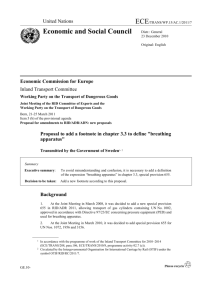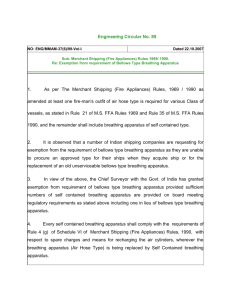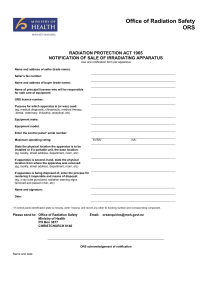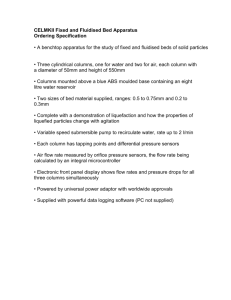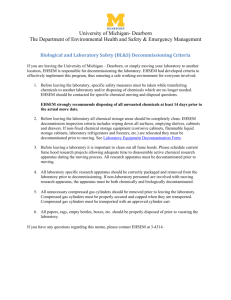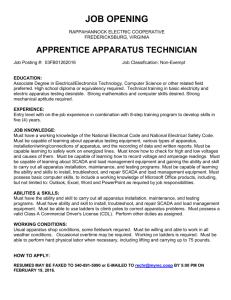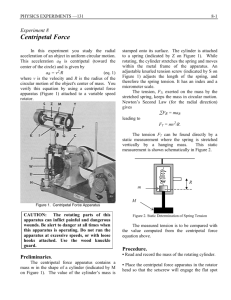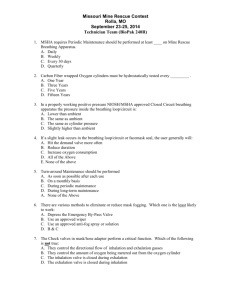BREATHING APPARATUS (BA)
advertisement
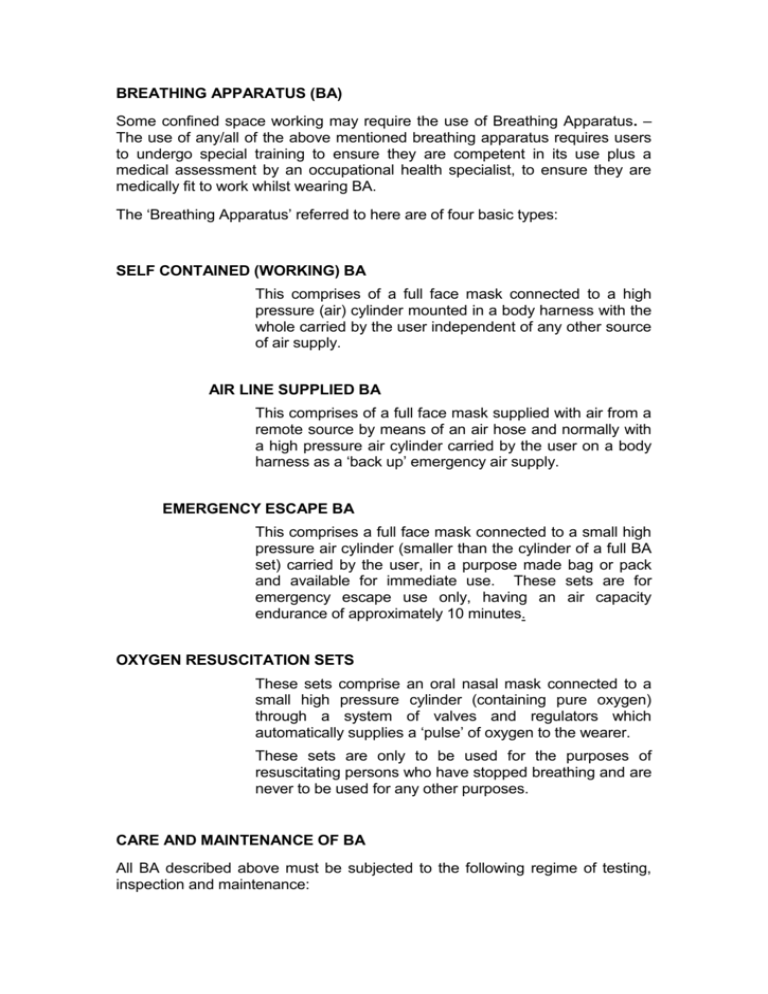
BREATHING APPARATUS (BA) Some confined space working may require the use of Breathing Apparatus. – The use of any/all of the above mentioned breathing apparatus requires users to undergo special training to ensure they are competent in its use plus a medical assessment by an occupational health specialist, to ensure they are medically fit to work whilst wearing BA. The ‘Breathing Apparatus’ referred to here are of four basic types: SELF CONTAINED (WORKING) BA This comprises of a full face mask connected to a high pressure (air) cylinder mounted in a body harness with the whole carried by the user independent of any other source of air supply. AIR LINE SUPPLIED BA This comprises of a full face mask supplied with air from a remote source by means of an air hose and normally with a high pressure air cylinder carried by the user on a body harness as a ‘back up’ emergency air supply. EMERGENCY ESCAPE BA This comprises a full face mask connected to a small high pressure air cylinder (smaller than the cylinder of a full BA set) carried by the user, in a purpose made bag or pack and available for immediate use. These sets are for emergency escape use only, having an air capacity endurance of approximately 10 minutes. OXYGEN RESUSCITATION SETS These sets comprise an oral nasal mask connected to a small high pressure cylinder (containing pure oxygen) through a system of valves and regulators which automatically supplies a ‘pulse’ of oxygen to the wearer. These sets are only to be used for the purposes of resuscitating persons who have stopped breathing and are never to be used for any other purposes. CARE AND MAINTENANCE OF BA All BA described above must be subjected to the following regime of testing, inspection and maintenance: Each set of BA must be thoroughly examined annually b a competent person (technician) Each set of BA must be inspected: Monthly by a competent person An ‘inspection’ is less detailed than the ‘thorough examination’ mentioned in (i) above. A report/record of the ‘thorough examinations’ and of the ‘inspections’ in (i) and (ii) must be made and kept as a record. There is no prescribed ‘form’ for these reports but each and every report must be so designed as to contain the following information: The name of the owner and the address of the place of use Particulars of the type resuscitating) apparatus A distinguishing mark or number and a description sufficient to identify each apparatus and any belt/rope attached to it The name of the manufacturer The condition of the apparatus and particulars of any defects found upon examination The pressure of air or oxygen in the supply cylinder(s) attached to the apparatus The date of the examination and the identity of the examiner of breathing (air TESTING OF HIGH PRESSURE AIR OR OXYGEN CYLINDERS All high pressure air or oxygen cylinders must be subjected to a full examination and test every five (5) years. Such examinations/tests would be carried out by specialist testing houses under special precautions and conditions and would not be conducted in-house. A record of the test/examination of each individual cylinder (identified by the manufacturers original serial number) will be issued by the testing house. Additionally, the date of the test will (must) be stamped on the shoulder of each cylinder or on such area of the cylinder that is thick enough to receive the stamp mark without weakening it. NOTE – Air/oxygen cylinders that have not been tested/examined within the specified five (5) year period must not be charged with the relevant gas and must not be used until they have been re-tested etc. TRAINING USERS OF BA No person shall use or be required to use any breathing apparatus, whether it be air supplied BA or oxygen supplied resuscitation BA unless they have been assessed medically as fit and they have received appropriate training in the type of BA to be used and have been shown to be competent in its use. SUPERVISORS AND TEAMS No person shall be allowed to enter any confined space unless they have received training and have been shown to be competent in all procedures and methods they must follow (including emergency procedures) and in the use of all the equipment that they are required to use. No person shall supervise any entry into any confined space unless they have been trained and made fully competent in the procedures and methods to be followed, including the completion and compliance with any checklists, permits to work or safe systems of work. EXAMINERS/INSPECTIONS OF BA No person shall be required or allowed to carry out the required annual thorough examinations or monthly inspections of breathing apparatus unless they are, by virtue of their training or proven experience, competent to do so and it is the duty of the employer to ensure such staff are competent. NOTE – This document is not a ‘system of work’ and must not be used as such. It is a policy document that should be used to develop systems of work specific to the type of work and the requirements of any given Service.
